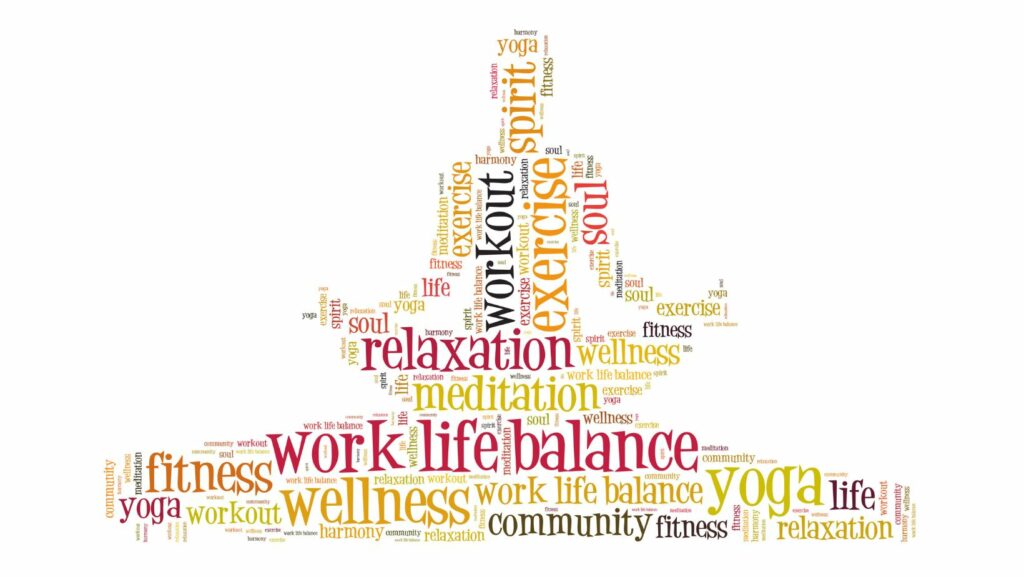In the fast-paced rhythm of modern life, finding balance and harmony may seem like an elusive goal. Yet, amidst the hustle and bustle, there exists a state of being known as “flow” – a mental and emotional state where individuals are fully immersed and energized by the activity they are engaged in. This article explores the concept of finding your flow and offers practical insights into creating a life of balance and harmony.

Understanding Flow: The Dance of Effort and Enjoyment
Flow, as described by psychologist Mihaly Csikszentmihalyi, is a state of optimal experience where individuals feel completely absorbed in an activity, losing track of time and experiencing a deep sense of fulfillment. It is characterized by a balance between the challenge of the task at hand and one’s skills, creating a harmonious blend of effort and enjoyment.
To find your flow, identify activities that captivate your interest and align with your skills. It could be a creative pursuit, a work project, or a physical activity. The key is to choose endeavors that strike the right balance – challenging enough to engage your abilities but not so difficult as to induce stress. By immersing yourself in these activities, you can tap into a state of flow that brings a profound sense of joy and satisfaction.
Cultivating Work-Life Balance: Setting Boundaries for Well-being
Achieving balance extends beyond the realm of specific activities; it encompasses the delicate interplay between work and personal life. Cultivating work-life balance involves setting boundaries that prioritize well-being and prevent the scales from tipping too heavily in one direction.
Establish clear delineations between work hours and personal time. Embrace the power of “no” when necessary, declining additional work commitments or social invitations that may infringe on your need for rest and relaxation. Create designated spaces for work and leisure within your living environment to physically separate the two aspects of your life.
Integrate rejuvenating activities into your routine, such as mindfulness practices, physical exercise, or hobbies. By consciously crafting a balance between work and personal life, you pave the way for a more fulfilling and sustainable existence.
Mindful Time Management: Harnessing Efficiency with Presence
In the quest for balance, mastering the art of time management is paramount. However, it’s not just about maximizing productivity; it’s about infusing each moment with a sense of purpose and presence. Mindful time management involves prioritizing tasks, setting realistic goals, and embracing the concept of “flow” in your daily activities.
Begin by identifying your most important and impactful tasks for the day. Break larger projects into smaller, manageable steps to avoid feeling overwhelmed. Embrace the Pomodoro Technique or similar methods, working in focused bursts with short breaks to maintain mental clarity and prevent burnout.
Mindful time management also entails recognizing when to step back and recharge. Taking breaks, whether a brief walk, deep-breathing exercises, or a moment of mindfulness, can refresh your mind and enhance overall productivity. By approaching time management with intention and mindfulness, you can create a rhythm that fosters balance and allows you to navigate through your responsibilities with grace.
Nurturing Self-Care: The Foundation of Balance and Harmony
At the core of a balanced life lies the practice of self-care – a commitment to nurturing your physical, mental, and emotional well-being. Self-care involves recognizing and responding to your own needs, treating yourself with kindness, and prioritizing activities that replenish your energy.
Establish a self-care routine that encompasses various dimensions of well-being. Incorporate physical activities you enjoy, whether it’s a brisk walk, yoga, or dancing. Prioritize sleep, ensuring you get the rest your body requires for optimal functioning. Engage in activities that bring joy and relaxation, whether it’s reading, spending time in nature, or enjoying a creative pursuit.
Practice self-compassion by being mindful of your internal dialogue and cultivating a positive relationship with yourself. Allow yourself to rest without guilt, acknowledge your accomplishments, and forgive yourself for imperfections. By making self-care a non-negotiable aspect of your routine, you fortify the foundation upon which a life of balance and harmony can flourish.
Conclusion
Finding your flow and creating a life of balance and harmony is a nuanced and evolving process. It requires self-awareness, intentional choices, and a commitment to nurturing both your inner world and external responsibilities. By understanding the dynamics of flow, cultivating work-life balance, mastering mindful time management, and prioritizing self-care, you can craft a symphony of balance that resonates through every aspect of your life.
Remember that balance is not a static state but a dynamic dance that adapts to the changing rhythms of life. Embrace the ebb and flow, be kind to yourself during challenging times, and celebrate the moments of harmony. As you navigate this journey, may you find your unique rhythm, unlocking the door to a life where effort and enjoyment coalesce, creating a tapestry of fulfillment and well-being.






Leave a Reply